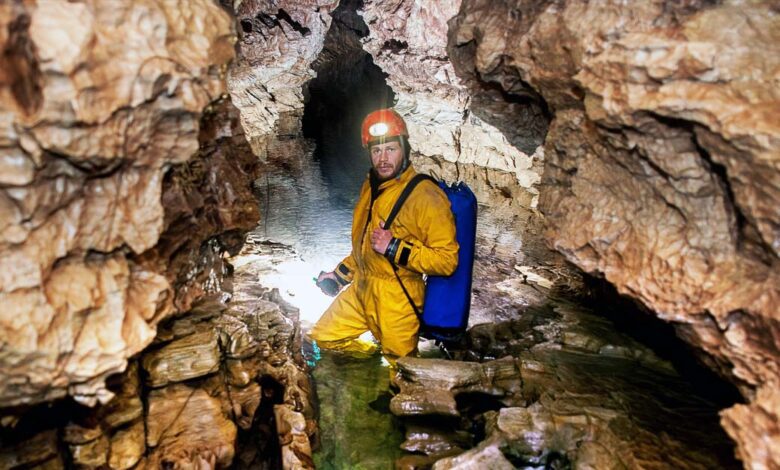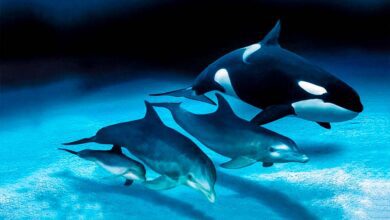4 августа: праздники и события в этот день

4 августа отмечают День спелеолога и День рождения шампанского. Это день, когда в разные эпохи происходили события, отразившиеся на истории науки, техники, освободительного движения, культуры и даже привычных сегодня светофоров.
День спелеолога
Эта дата приурочена к моменту, когда 1958 группа советских исследователей первой в истории достигла глубины более 1 км в пещере Крубера (позднее известной как Воронья), ныне на территории оккупированной Абхазии. С тех пор этот день стал неофициальным профессиональным праздником спелеологов.
Спелеологи – это не туристы, а исследователи. Их главная задача – изучение карстовых пород, пещерных систем, подземных рек и биоты. Их труд пересекается с геологией, биологией, гидрологией и даже археологией. Часто именно благодаря спелеологам обнаруживают новые виды животных, остатки древних поселений или системы, которые могут использоваться для мониторинга изменений климата. В некоторых регионах пещеры имеют стратегическое значение: природные хранилища, резервуары для воды или архивы климатической информации.
В Украине спелеология имеет давнюю и развитую традицию. Здесь действуют несколько крупных спелеоклубов, в частности, в Киеве, Львове, Харькове, Черновцах и Тернополе. Именно в Тернопольской области расположены самые длинные гипсовые пещеры Европы. К примеру, пещера Оптимистичная — самая длинная гипсовая пещера мира, ее исследованная длина превышает 260 км. Она полностью залегает в горизонтальной плоскости и известна сложной навигацией. Ее изучение длится более 50 лет, и новые участки открывают каждый год.
Важно, что спелеология требует чрезвычайной физической выносливости, технических знаний и полной самодостаточности. В глубоких пещерах не работает связь, а подъем может занять несколько дней. В случае травмы помощь может поступить только через многие часы, поэтому даже в любительских группах действуют правила медицинской подготовки, навыков выживания и командного взаимодействия. В профессиональных экспедициях все еще используют бумажные схемы, карбидные лампы, а также современные приборы для 3D-картографии.
Интересные факты
В пещере Озерная (Тернопольщина), которая простирается более чем на 120 км, на большой глубине хранятся мини-озера с уникальной микробной средой. Их состав до сих пор не изучен полностью.
В 2023 году украинские спелеологи впервые зафиксировали в пещере Млынки (также Тернопольщина) колонии летучих мышей, мигрировавших с юга. Это может свидетельствовать об изменении климата или влиянии войны на миграционные маршруты животных.
В ходе активной фазы боевых действий в 2022 году некоторые спелеологи на волонтерских началах помогали спасателям, используя свои знания подземных систем на востоке Украины.
Украинские пещеры обладают значительным потенциалом для использования в качестве природных лабораторий для изучения изменений климата. К примеру, постоянная температура и отсутствие света позволяют проводить прецизионные измерения углерода и изотопов.
Есть документально зафиксированные случаи, когда украинские спелеологи в экспедиции в пещерах находились под землей без выхода на поверхность более 14 дней.
В Карпатах есть вертикальные пещеры глубиной более 200 м, исследуемые только с использованием альпинистского снаряжения. У некоторых из них до сих пор не достигнут конца.
День рождения шампанского
4 августа неофициально считается днем рождения шампанского — игристого вина, ставшим синонимом праздника, роскоши и символом Франции. Именно в этот день 1693 года, по легенде, бенедиктинский монах Дом Периньон якобы впервые попробовал игристое вино, изготовленное во французском регионе Шампань. Ему приписывают не создание самого вина, а усовершенствование метода его производства.
На самом деле игристое вино существовало и до Периньона, в частности в регионе Лангедок, а в Италии еще раньше. Особенность вина из Шампани заключалась в другом: суровые климатические условия, известняковые почвы и двухфазное брожение в бутылке создали уникальный стиль напитка с мелкими, стойкими пузырьками. Именно эта технология, со временем оформленная как «méthode champenoise», стала тем, что мир сейчас воспринимает как настоящее шампанское.
Название «шампанское» в Европе юридически может носить только вино, произведенное в одноименном регионе Франции, с соблюдением строгих стандартов. Остальные производители за пределами этого региона должны употреблять термины «игристое вино» или «вино с традиционным методом».
Шампанское стало культовым напитком в XVIII веке. Французская аристократия, а затем и дворы других стран, сделали его неотъемлемым атрибутом светской жизни. Бренды Moët & Chandon, Veuve Clicquot, Bollinger не только торговали вином, но и формировали стиль. В XX веке шампанское стало символом триумфа – его открывали на спортивных подиумах, в кино, на свадьбах, во время больших политических событий.
Интересные факты
Дом Периньона был слепым уже в преклонном возрасте, поэтому определял качество вина по вкусу и слуху. Легенда о его крике «Я пью звезды!» — выдумка XIX века впервые появилась в рекламе.
Бутылка шампанского выдерживает давление до 6 атмосфер – это втрое больше, чем в шине легковой машины. Именно поэтому бутылки имеют толстое стекло и закрываются пробкой с проволочной обвязкой.
В СССР «шампанское» стало брендом массовой культуры. Известное «Советское шампанское» изготовлялось методом резервуарного брожения – технологией, отличной от классической французской.
Самая дорогая бутылка шампанского в мире — «Goût de Diamants» (Вкус бриллиантов), оцененная более чем в 1,5 млн евро. Причина – не в самом вине, а в бриллиантовой вставке на этикетке из белого золота.
На дне бутылки шампанского есть углубление – пунт. Оно возникло как технологическая необходимость из-за высокого давления и помогает равномерно распределять его в бутылке. Кроме того, это удобно для сервировки.
В 2010-х на дне Балтийского моря обнаружили 168 бутылок шампанского XIX века в затонувшем корабле. После поднятия часть дегустировали — вино сохранилось и оказалось пригодным к употреблению, хотя и очень специфическим вкусом.
Известный жест открывания шампанского саблей — сображ — происходит из эпохи Наполеона. Кавалеристы праздновали победы, разбивая горло бутылки клинком.
Исторические события в этот день
1492 —Христофор Колумб начал свою первую экспедицию с целью поиска более короткого морского пути в Индию. Она стартовала из порта Палос-де-ла-Фронтера. На борту трех судов — «Санта-Мария», «Пинта» и «Нинья» — находились около 90 человек. В результате экспедиция привела к открытию Америки, хотя сам Колумб до конца жизни считал, что достиг берегов Азии.
1687 —Иван Мазепа избран гетманом Левобережной Украины на казацком совете в Коломаке. После избрания он заключил с Москвой Коломацкие статьи, которые ограничивали автономию, но сам Мазепа постепенно выстраивал внутреннюю политику с элементами независимости, укреплял власть, развивал образование, экономику и архитектуру.
1693 —Бенедиктинский монах Дом Периньон, эконом монастыря Отвильер в регионе Шампань, впервые описал процесс создания игристого вина с мелкими пузырьками. Именно дата считается символическим днем рождения шампанского. Хотя технология была известна и раньше, именно Периньону приписывают ее усовершенствование и осмысление как искусство.
1777 —В Лондоне отставной кавалерист Филипп Эстли открыл первый в мире цирк. Это был амфитеатр с круглой ареной для конных трюков. Идея соединить акробатику, дрессуру, жонглирование и музыку в единственном зрелище положила начало новой развлекательной традиции, которая впоследствии распространилась по всей Европе.
1914 —Во Львове создан Союз Освобождения Украины — первая украинская политическая организация, которая поставила цель создания независимого украинского государства. СВУ действовала в условиях Первой мировой войны, поддерживала среди украинских эмигрантов, выдавала прессу, вела агитацию среди военнопленных и активно работала на международном уровне.
1922 —В день похорон Александра Грэма Белла, изобретателя телефона, в Северной Америке остановили работу 13 миллионов телефонов ровно на одну минуту — в знак скорби. Это было беспрецедентное проявление уважения к человеку, чье изобретение радикально изменило коммуникацию в мире.
1926 —В центре Лондона на площади Пиккадилли установлены первые автоматические светофоры. Они имели красный и зеленый сигналы и работали по электромеханическому принципу. Это ознаменовало начало эры регулируемого автомобильного движения в городе, где уже тогда ощущалась нехватка порядка на дорогах.
1934 —В городе Кривой Рог на «Криворожстали» введена в эксплуатацию первая доменная печь. Это явилось этапом индустриализации Донбасса и центральной Украины, дало толчок к формированию мощного металлургического комплекса. Событие имело важное значение не только экономическое, но и социальное, способствуя росту города и появлению новых трудовых коллективов.
1962 —В ЮАР арестовали Нельсона Манделу, одного из лидеров Африканского национального конгресса. Его осудили за взрывную деятельность и он провел в тюрьме 28 лет. После освобождения в 1990 году Мандела стал символом борьбы с апартеидом и впоследствии первым темнокожим президентом ЮАР.
2016 —Группа исследователей из Оксфордского университета продемонстрировала работу квантового вентиля с точностью 99,9% — приближающимся уровнем к необходимому для полноценного построения квантового компьютера. Квантовый вентиль – ключевая единица в вычислениях на основе кубитов, обрабатывающих информацию не только в нулях и единицах, но и в суперпозициях. Этот прорыв стал важным шагом в развитии новой эпохи вычислений.
Изобретение шампанского французским монахом Дом Периньоном
4 августа 1693 года французский монах Дом Периньон ошеломил братию монастыря Отвильер напитком, в котором серебристые пузырьки с тихим шорохом поднимались со дна бокала, а прозрачная пена искрилась, словно живая. С тех пор именно 4 августа считается днем рождения шампанского.
Дом Пьер Периньон служил экономом в бенедиктинском аббатстве, расположенном в самом сердце французской Шампани. В перерывах между хозяйственными заботами он посвящал себя винодельческим экспериментам. Он сочетал вина из разных виноградников, стремясь достичь гармоничного вкуса — то, что называется кюве (от фр. cuvee — купаж нескольких вин). Его поиски продолжались почти полвека. И однажды результаты многочисленных попыток дали вознаграждение: в бокале появился пенящийся напиток, сверкающий и создающий совершенно другое виноватое впечатление. Возможно, это только красивая легенда. Единственный достоверный документ, упоминаемый в связи с Периньоном, — трактат о состоянии виноделия в Шампани, написанный около 1724 братом Пьером.
Интересно, что англичане отрицают первенство Франции в создании шампанского. Они считают, что именно они первыми усовершенствовали метод хранения пузырьков в бутылке и сделали больше всего для популяризации игристого вина в мире. По преданию, Уинстон Черчилль каждый день около 11 утра — сразу после пробуждения — получал бутылку шампанского из рук дворецкого.
Несмотря на дискуссии, с того времени шампанское стало неотъемлемой частью праздников — от коронаций до свадеб и обычных ужинов. После Первой мировой войны Франция приняла закон, согласно которому называть шампанским можно только игристое вино, изготовленное непосредственно в регионе Шампань с соблюдением строгих требований. Некоторые страны до сих пор не согласны с этим правилом, но в международном праве оно действует.
Император Наполеон считал: «Если ты побеждаешь – ты заслуживаешь шампанского, когда проигрываешь – оно тебе нужно». Марлен Дитрих говорила: «Шампанское — это то, что дает ощущение, будто каждый день воскресенье». Маркиза де Помпадур утверждала: «Шампанское — единственный напиток, делающий женщину красивой после того, как она его выпьет». Эрнест Хемингуэй советовал: «Я не знаю лучшего способа потратить деньги, чем потратить их на шампанское».
Как рассказывает легенда, монах Дом Периньон, отведав свой напиток, воскликнул: «Я пью звезды!» Именно в его честь названа одна из самых известных марок шампанского – Dom Pérignon.
День рождения Луи Армстронга
4 августа 1901 года в Новом Орлеане родился Луи Армстронг — мальчик из бедного квартала, которому суждено было изменить не только музыку, но и сам способ восприятия джаза в мире.
Его детство было далеко от романтики: отец ушел из семьи, мать работала прачкой, а Луи рос среди улиц и задворков района Сторивилль, известного своей бедностью, проституцией и громкой музыкой. Он подрабатывал на улицах, продавая угли, и учился выживать. В новогоднюю ночь, когда ему было 11, он выстрелил холостой патроном в воздух — и за это попал в исправительное заведение для темнокожих подростков. Там впервые взял в руки корнет и начал играть в духовом оркестре.
Это была не классическая музыкальная школа. Это был мир звуков, рождавшихся на улице, в баре, в голове. Его манера игры была глубоко индивидуальна — он не просто исполнял джаз, а творил его заново каждый раз. Его импровизации поражали музыкантов в Чикаго, Нью-Йорке, Париже. У него не было музыкального образования, но у него было абсолютное чутье на ритм, форму и момент. В его трубе не было фальши – только правдивый звук жизни.
Армстронг первым сделал из джаза не просто стиль, а язык с интонацией, юмором, внутренней драмой и светом. Его хрипловатый голос, звуки трубы, улыбка и манера говорить стали узнаваемыми во всем мире. Его музыка объединяла белых и чёрных, бедных и богатых, слушателей в Америке, Европе, Азии.
Его песня What a Wonderful World, записанная в конце жизни, не была типичной для его репертуара, но стала его музыкальным завещанием. Это был голос человека, который прошел сквозь нищету, расизм, мировые войны, смену эпох — и сохранил в себе тепло.
Армстронг умер в 1971 году, но оставил после себя не просто записи, а ощущение ритма века. Мало кто знает, что он был еще и листовщиком — обожал писать письма, шутил в них, добавлял фото, вырезки из газет и даже коллажи, которые составлял сам. И всегда подписывался «Satchmo» или «Pops». Так к нему обращались самые близкие и весь мир.





